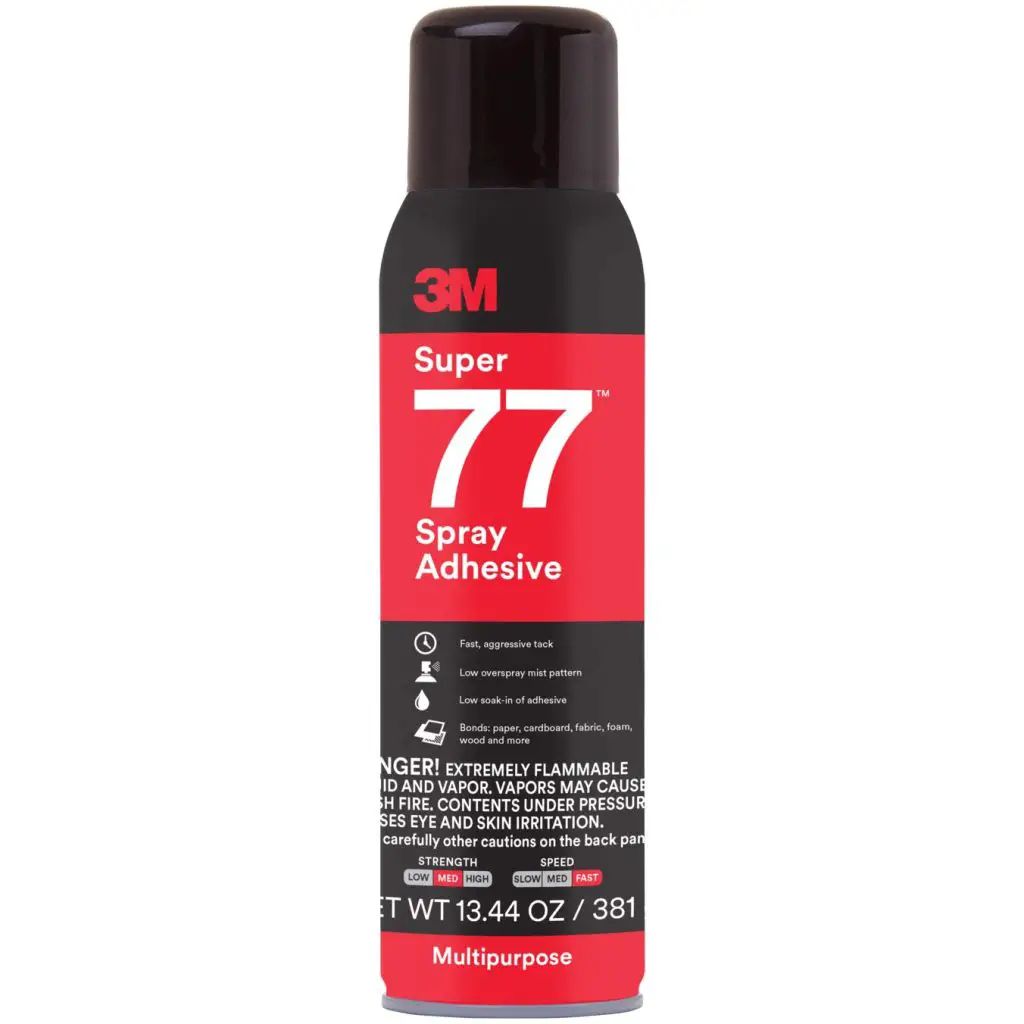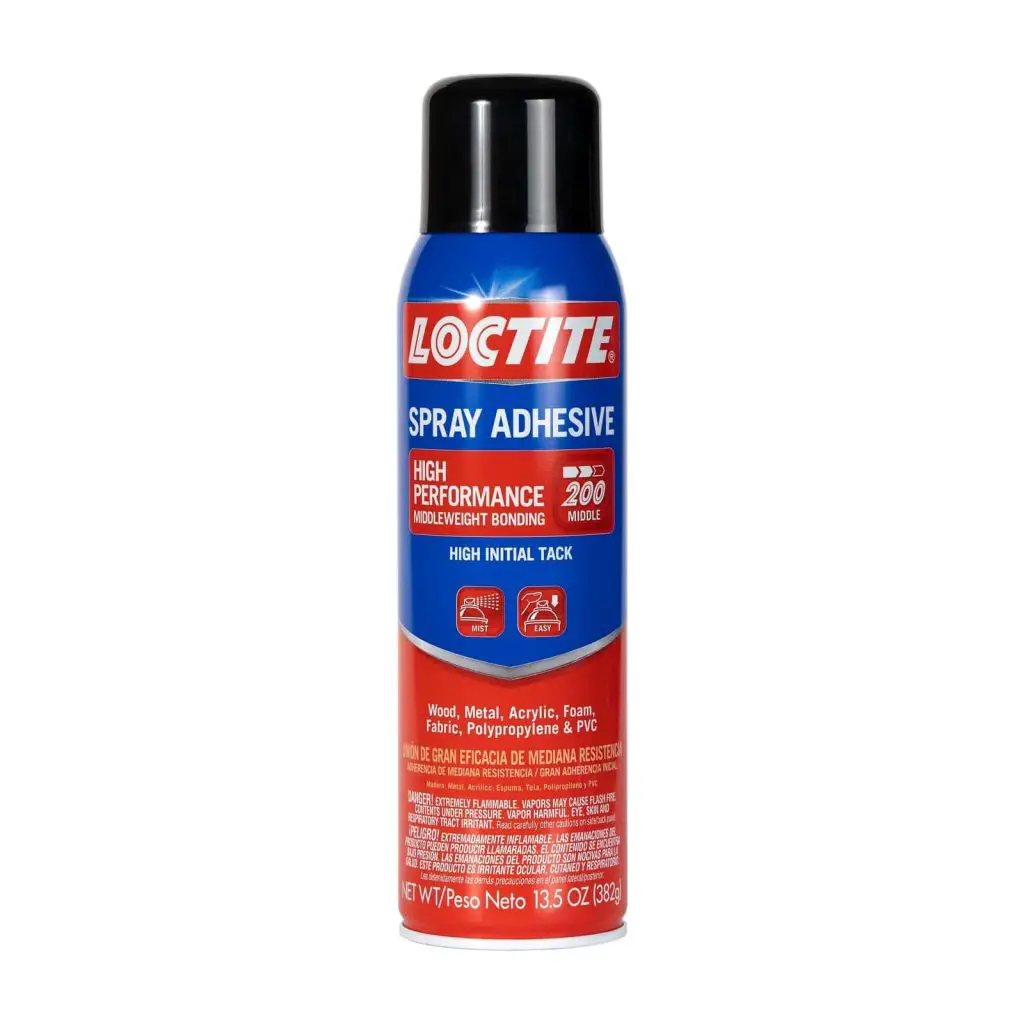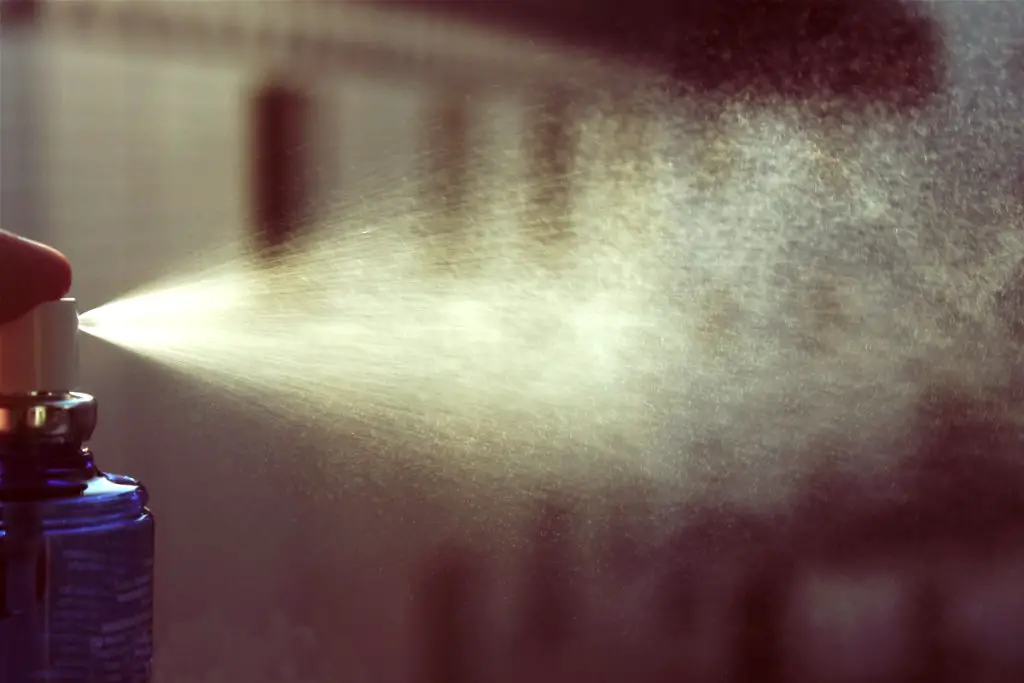Spray glue adhesive is, without a doubt, one of the marvels of modern adhesion technology. In a world that continually demands efficiency and versatility, the development and refinement of this adhesive type have transformed industries, DIY projects, and crafts.
Unlike traditional adhesives that require spreading or brushing, spray glue adhesives offer a consistent, even application in mere seconds, ensuring optimal bonding strength and surface coverage.
These adhesives, once limited in their scope, have now diversified, catering to specialized needs from automotive upholstery to intricate crafts. However, as with all potent tools, understanding its breadth and depth is vital to harness its full potential.
In this article, we will cover everything from application, top picks and their uses to the best practices for using spray glue. Let’s get started!
Types of Spray Glue Adhesives
The vast world of adhesives is continually evolving, with spray glues emerging as a modern marvel for a multitude of applications. These adhesives, distinguished mainly by their delivery method, come in various types, each designed for specific tasks and materials.
- Aerosol Adhesives: Packaged under pressure, these are released as a fine mist suitable for lightweight materials like paper, fabric, or photographs.
- Polyurethane Spray Adhesives: Recognized for their excellent weathering resistance, these are perfect for outdoor applications.
- Epoxy Spray Adhesives: This type boasts a combination of strength and temperature resistance. Ideal for metals or composite materials.
- Cyanoacrylate Spray Adhesives: Famously known as ‘super glue’, they offer a fast bond but are less flexible.
- Contact Spray Adhesives: Known for forming bonds when two sprayed surfaces are joined, they work wonders with larger surfaces like laminates.
Water-Based vs. Solvent-Based
Water-based spray adhesives use water as the primary solvent, making them eco-friendlier and less odorous. They offer longer drying times, providing flexibility during application. On the other hand, solvent-based adhesives use chemical solvents, evaporating faster and offering a quicker bond.
Suitable Applications for Each
Water-based adhesives are ideal for indoor applications, especially in poorly ventilated areas. They’re perfect for arts and crafts. Solvent-based ones are more suited for automotive or industrial tasks, where a quick, robust bond is paramount.
High-Strength vs. General-Purpose
High-strength spray adhesives are crafted to handle heavy-duty tasks. They bond robust materials like metal, wood, or certain plastics. Conversely, general-purpose adhesives, while versatile, are meant for lighter tasks.
High-strength is sought after in automotive repairs or industrial applications. General-purpose shines in home projects or crafts.
Top 5 Spray Glue Adhesives: Best Picks
Here is a list of the best spray glue adhesives you can try:
3M Super 77 Multipurpose Adhesive

- Features: This adhesive boasts a fast-drying formula with an aggressive tack and low soak-in, making it ideal for a wide range of projects.
- Specs: The adhesive covers a large area while maintaining its bond strength for extended periods.
- General Overview: Known for its reliability, 3M Super 77 is a versatile choice for both professionals and hobbyists.
- Ideal for: Lightweight materials such as foils, plastics, papers, foams, metals, and cardboard.
Gorilla Heavy Duty Spray Adhesive

- Features: Gorilla brings a clear, non-yellowing adhesive formula that provides a comfortable and repositionable bond.
- Specs: It’s a multipurpose adhesive that resists bleed-through for consistent results.
- General Overview: True to the Gorilla brand, this adhesive offers a heavy-duty bond that’s long-lasting.
- Ideal for: Craft projects, home décor, and even automotive applications.
Loctite 200 High-Performance Spray Adhesive

- Features: This adhesive is known for its premium quality, ensuring a durable bond resistant to aging.
- Specs: With a coverage of 70 sq. ft. per can, it provides a clear adhesive layer.
- General Overview: Loctite’s reputation for high-performance products continues with this reliable spray adhesive.
- Ideal for: Bonding wood, metal, acrylic, foam, fabric, polyethylene, and polypropylene.
Krylon All-Purpose Spray Adhesive

- Features: A versatile adhesive solution that can bond surfaces together or provide a temporary tack.
- Specs: It offers a smooth, flexible, non-wrinkling bond that’s acid-free.
- General Overview: Krylon’s spray adhesive is user-friendly and provides satisfactory results across various applications.
- Ideal for: Scrapbooking, picture framing, and other craft projects.
Elmer’s Craftbond Multi-Purpose Spray Adhesive

- Features: A fast tack formula that’s acid-free, ensuring your projects remain safe and undamaged.
- Specs: Offers temporary or permanent bonds, giving users flexibility in their projects.
- General Overview: From a trusted brand in the adhesive industry, Elmer’s Craftbond meets expectations for DIY projects.
- Ideal for: Paper crafting, mounting pictures, and adding embellishments to diverse projects.
Key Benefits of Using Spray Glue Adhesives
Here are some reasons why using spray glue adhesives is worth it:
Speed and Efficiency
The most notable benefit of spray glues is their application speed. Unlike traditional adhesives, which need spreading, spray glues cover surfaces swiftly, offering fast drying times. Spray glues can reduce project completion time by up to 70% compared to conventional glues.
Versatility Across Materials
Spray glues are remarkably versatile. They can bond a multitude of materials from porous to non-porous. The bonding strength of spray adhesives on materials like wood or metal can withstand pressures of up to 1200 psi, making them invaluable for various applications.
Environmental and Health Advantages
With a growing emphasis on sustainability, many modern spray adhesives have reduced toxins and VOCs. This reduction significantly impacts indoor air quality, making workspaces healthier. Furthermore, water-based spray adhesives contribute less to air pollution, championing both environmental and user health.
Common Applications and Techniques
Spray glue adhesives have truly revolutionized the realm of bonding, offering an efficient and effective alternative to traditional glues. Their versatility allows them to cater to a vast array of applications, from DIY crafts to large-scale industrial projects.

Crafts and DIY Projects
One of the most predominant arenas where spray glue adhesives have showcased their prowess is in the crafts and DIY sector. The ease of application ensures that even novices can achieve a professional touch in their endeavors.
Tips for a flawless finish:
- Ensure surfaces are clean and dry before application.
- Hold the can upright and maintain a distance of approximately 10 to 12 inches from the surface.
- Apply in a steady, sweeping motion for even coverage.
Industrial and Commercial Uses
Beyond the confines of homes and craft spaces, spray glue adhesives play an instrumental role in the industrial and commercial sectors. Their efficiency is unmatched, especially in settings that require mass production.
In industries like furniture manufacturing or footwear production, spray adhesives not only enhance the speed of assembly but also ensure a robust bond that can endure wear and tear.
Automotive and Upholstery
The realm of automotive manufacturing and upholstery demands precision, durability, and finesse—qualities that spray glue adhesives readily offer.
Automotive grade spray adhesives are crafted to withstand the rigors of temperature fluctuations and vibrations. Similarly, upholstery-specific adhesives ensure fabrics remain plush and crease-free.
Technique tips for long-lasting bonds:
- Surface preparation is crucial. Ensure surfaces are devoid of dust or oil.
- When working with fabrics, a light, even coat prevents oversaturation, ensuring the material doesn’t become stiff or lose its texture.
- For automotive applications, especially in areas exposed to high heat, using heat-resistant adhesives is pivotal for enduring bonds.
Safety and Best Practices
When working with spray glue adhesives, achieving the best results doesn’t merely stop at the application. Proper safety measures, storage guidelines, and clean-up practices ensure that you’re not just getting a solid bond but are also maintaining a safe environment.
Precautionary Measures
Ventilation is paramount when using spray adhesives. Always ensure you’re working in a well-ventilated area to avoid inhaling fumes, which can be harmful over extended periods. If indoors, open windows or use exhaust fans to aid in circulating fresh air.
Protective gear is another essential. Wear gloves to prevent adhesive from making contact with your skin and safety goggles to shield your eyes from any accidental splashes.
Lastly, always read the product label. Many manufacturers provide specific safety guidelines tailored to the particular adhesive’s composition and potency.
Storage and Shelf Life
Optimal storage extends the life of your spray adhesive. Store cans in a cool, dry place away from direct sunlight or extreme temperature variations.
It’s advisable to keep them at room temperature, as cold conditions can affect the adhesive’s consistency and efficiency. Conversely, hot environments can increase internal pressure, posing potential risks.
Always ensure the cap is securely in place after use to maintain the adhesive’s potency and prevent drying. Regularly check the expiration date. While many adhesives may work beyond this date, over time, their bonding capabilities can diminish.
Clean-up and Maintenance
Accidents happen, and adhesive overspray or spills are not uncommon. For immediate clean-up, damp cloths or commercial adhesive removers can effectively wipe away wet adhesive. Once the adhesive has dried, it becomes trickier, but gently scraping the surface or using a solvent-based remover can help.
Remember to always test the remover on an inconspicuous area first to prevent potential damage. Maintain the spray nozzle by wiping it after each use, preventing clogs and ensuring an even spray during the next application.
Proper clean-up and maintenance practices ensure that your work environment remains tidy and your adhesive applications are consistently at their best.
Conclusion
The versatility offered by spray glue adhesives is truly unparalleled. That said, every adhesive, especially ones as potent as spray glues, demands a level of expertise for optimal results.
By sticking to safety protocols, understanding its applications, and staying updated with the latest advancements, we ensure not just the success of our projects but also the longevity and durability of the bonds we create.
Good luck!


